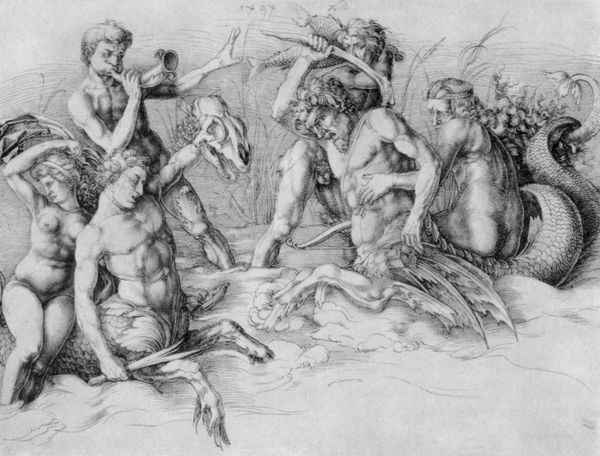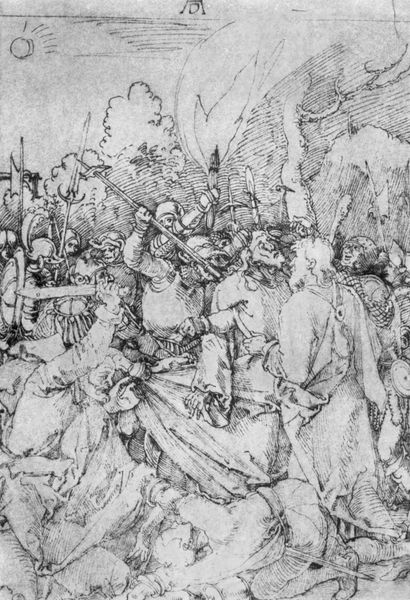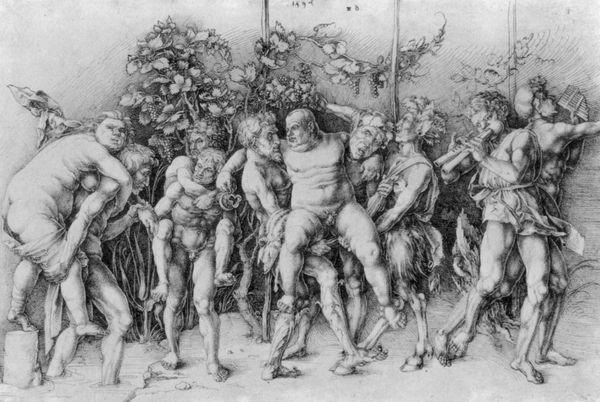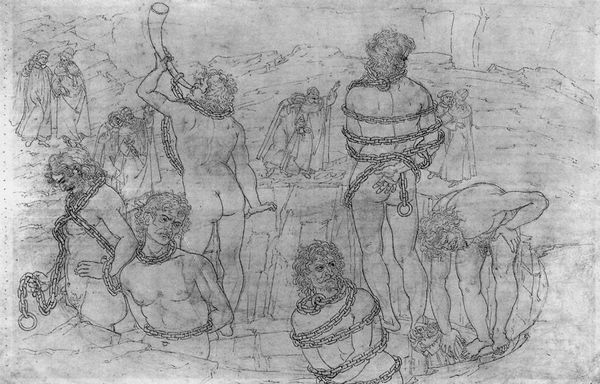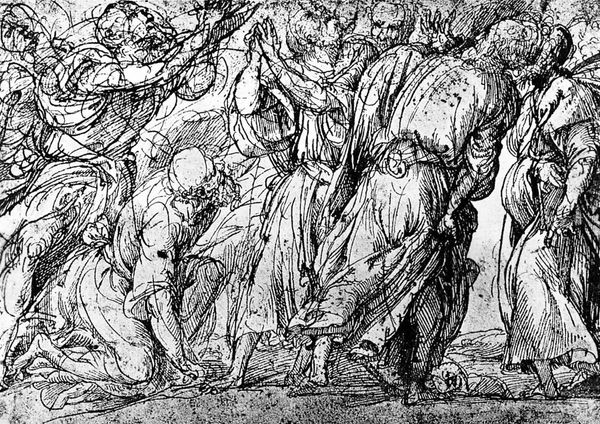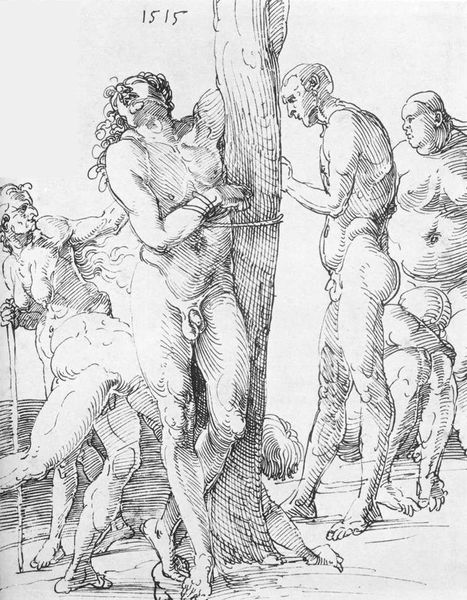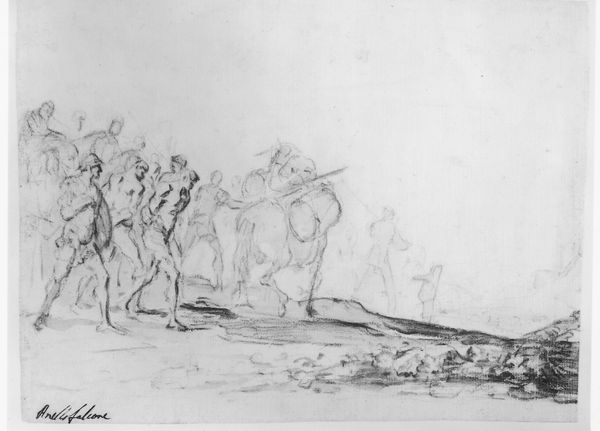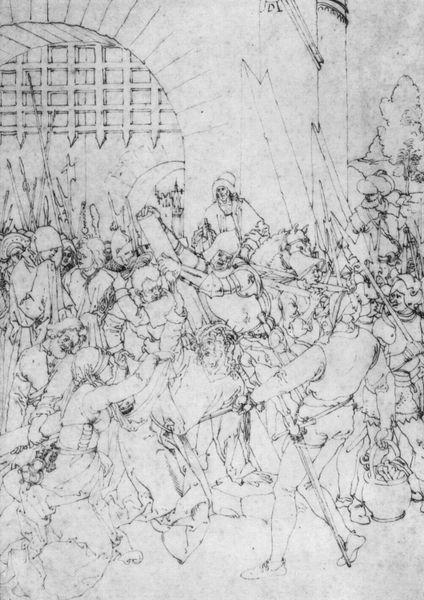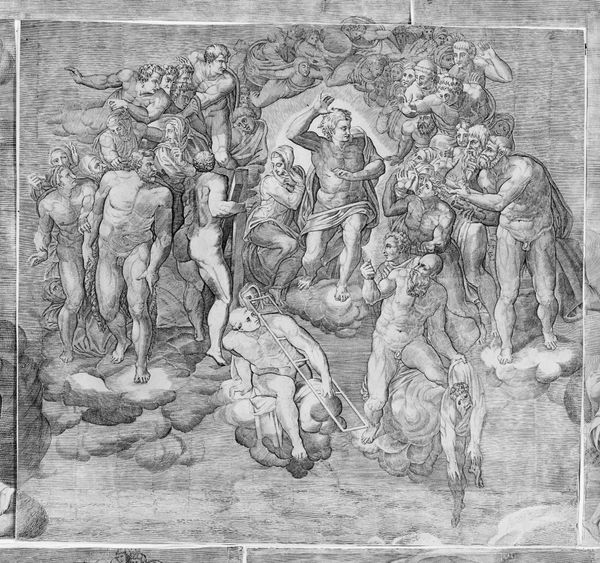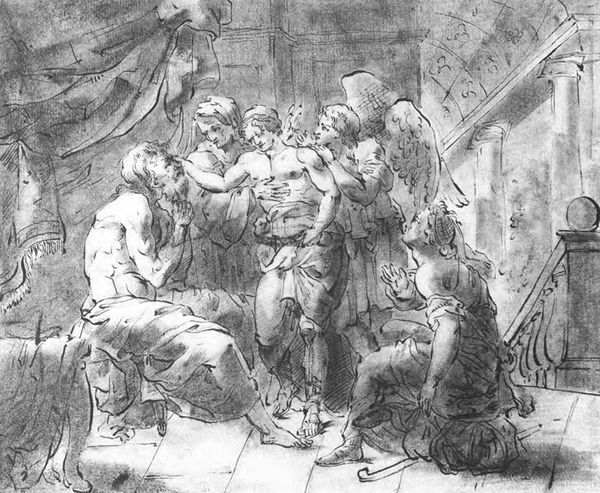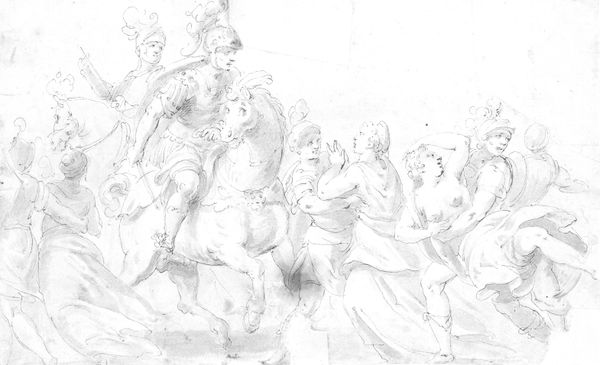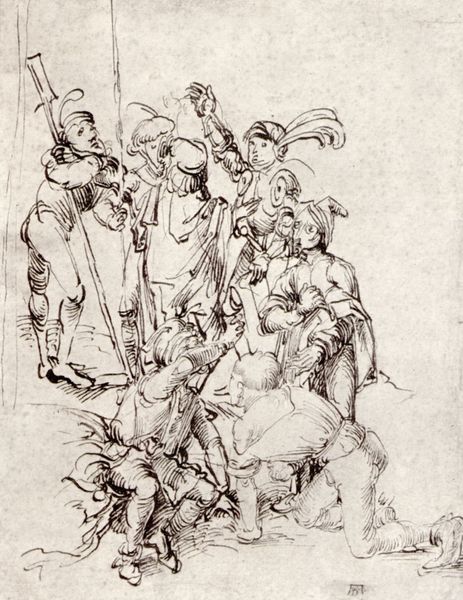
#
pencil drawn
#
amateur sketch
#
pencil sketch
#
incomplete sketchy
#
charcoal drawing
#
female-nude
#
sketchwork
#
detailed observational sketch
#
sketch
#
rough sketch
#
pencil work
#
initial sketch
Copyright: Public domain
Curator: This intriguing work, titled "Women only," comes to us from the hand of Albrecht Durer, around 1516, and resides at Chatsworth House. It appears to be a pen and ink sketch, though I encourage you to draw your own conclusions about the precise materials and processes involved. Editor: My immediate thought is... chaotic energy! A flurry of figures, lines overlapping, and no real sense of groundedness. It feels immediate, like a snapshot of a very peculiar gathering. Curator: "Peculiar" is a good word. Durer was fascinated by the classical ideal of beauty but also acutely aware of its unattainability. He frequently juxtaposed idealized forms with more earthly, "realistic" figures. Could this be at play here? A contrast between accepted standards and a franker observation? Editor: Perhaps, though I'm equally drawn to the visible labor in the work. The cross-hatching, the quick strokes…it's clearly a study, an investigation of form and composition, made visible in the sketch lines. This isn’t some polished pronouncement; it's the artist *thinking* through making. The choice of pen and ink supports that feeling. Curator: Absolutely. And observe the way the women are positioned in a specific, seated configuration or, we might say, a 'harem configuration', only without the imperial figure traditionally present. As such it can be construed as a subversive statement about their communal experiences together in what would otherwise be assumed as solitude in private spaces. Editor: Fascinating. And the implied domestic setting lends itself to reading this on the same register as other artwork that depicted scenes from workshops or daily activities, in which it highlights their function, skill and contribution. Are they bathing or engaging in other social customs? What exactly are these bodies *doing* together? What actions, what rituals, bind them? The open-endedness makes one think about the conditions for their co-dependence and the lack of labor mobility they have. Curator: Precisely! This is where the power of symbolism resides, its layered capacity for endless reinterpretation, for creating meaning beyond the purely representational. It speaks volumes, quietly. Editor: Ultimately, though, for me, the image lingers because of its materiality – it's about mark-making. That is to say: process over product. Curator: For me, the power resides in that complex layering of potential meaning that only history and context can afford to a work such as this, revealing those shared anxieties. Editor: And those are questions made visible and felt only thanks to that immediacy.
Comments
No comments
Be the first to comment and join the conversation on the ultimate creative platform.
